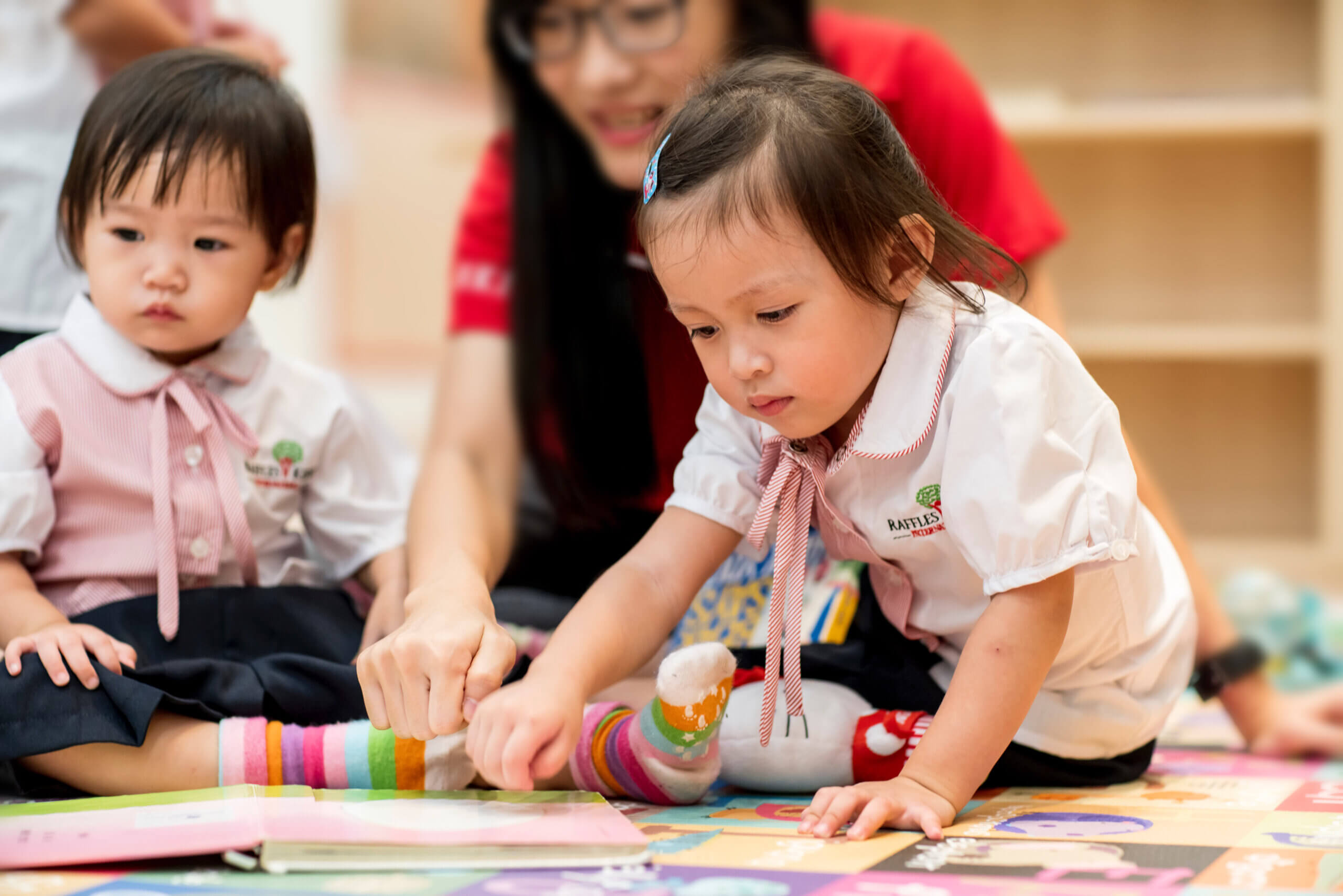People tend to believe that creativity is a skill only required in artists; which is far from the truth. Creativity in children can also refer to how they process information, find solutions, think of new ideas, and navigate the world around them.
Creativity is a crucial component of excelling in the sciences, mathematics, emotional intelligence and even engaging in social interactions. It is also a means of self-expression. The ability to be creative, to create something from personal feelings and experiences, can reflect and nurture children’s emotional health.
Children also develop better cognitively when creativity is encouraged. They are more willing to think outside the box and engage in problem-solving when faced with challenges.
The ability to think creatively is beneficial for any child and the best time for a child to do so is in their preschool years. At this age, their minds are able to absorb information easily. Childcare centres often integrate creative thinking in their curriculum and that is one of the crucial factors parents consider when choosing the right childcare centre for children.
In the meanwhile, here are some ways you as a parent can encourage creative thinking from right at home:
1. Read with them
Reading to and with your child is one of the most important activities you can do with them. It is a fantastic way to encourage imagination, which is one of the pillars of creative thinking. It helps enhance their linguistic skills, expand their vocabulary, broaden their imagination, and can also teach empathy. When you read to children, you can also use this as a chance to ask them probing questions and learn more about their thinking process. A great and fun way to develop creativity would be to ask them to craft a story or write their own ending and see the results for themselves.
2. Introduce educational shows, apps & games
Passive screen time that does not ask for creative thinking – or any thinking at all – should be avoided, especially for children under the age of 2. However, when screen time is given appropriately and in moderation, it can be beneficial in developing children’s creative thinking and problem-solving skills. The quality of the media your child is exposed to is more important than the type of technology or amount of time spent.
As your child grows, you can start introducing short periods of screen time with interactive programmes that involve music, movement and stories. There are also many educational apps and games available to stimulate your child’s mind, enhance creative thinking, and work on their fine motor skills.
3. Spend time on art
Art is an excellent example of an activity that requires and encourages creativity. As children grow and develop, they tend to try new things and express themselves in different ways. As such, children tend to enjoy engaging in artistic endeavours as a form of self-expression, making it a breeze for them.
A great thing about art is its variety and freedom to explore new ideas. Assign some time each day for your child to do some art. Examples of open-ended artistic activities include drawing, painting, making collages, and sculpting with clay. To delve deeper into their creative process, you can pose questions like, “Can you tell me what is happening in this painting?”
4. Encourage independent play
Allotting unstructured free time to your child is paramount in boosting creativity. Allowing your children to spend a certain amount of time on their own lets them develop interests and ideas that would not be possible with constant supervision.
Independent play gives them unprecedented freedom to explore aspects of their environment and ideas without inhibition. When left on their own, children are required to lean on their imagination and whatever resources they have, which encourages creativity.
By showing your children that there is no need to conform to a standard way of thinking, you can let them develop their own games to deepen their capacity for creative thinking further.
5. Start an exchange of ideas
Ideas are often the result of creativity. It’s important that you get your child to express them as often as possible. It’s even more essential not to reject, refute, or mock these ideas, as this would only serve to discourage creative thinking as a whole.
While not all ideas are brilliant, you can still acknowledge that the rationale behind them is valid. Encourage the good aspects of an idea and help fill in any knowledge gaps that would be needed for the execution of it.
If your child has the notion that some ideas are wrong and is afraid of sharing the “wrong” ideas, they will likely not want to leave their comfort zone. To cultivate creativity in your child, you need to create a safe environment that encourages self-expression and sharing of new ideas. Teaching them that their ideas are valid and that mistakes are natural is vital to creative development.
Conclusion
Creativity is an essential part of a child’s development and informs how they will navigate their lives in the future. As such, it must be instilled in them from a young age. At Raffles Kidz, we encourage creativity through our well-rounded, award-winning curriculum and strive to prepare children for the world in every possible way. Our enrichment module aids in the simultaneous development of their creativity and logical reasoning through programmes like Gourmet Chef, Creative Artist, and Culture & Drama. Curious to learn more? Book a tour with us today!






 Raffles Kidz
Raffles Kidz